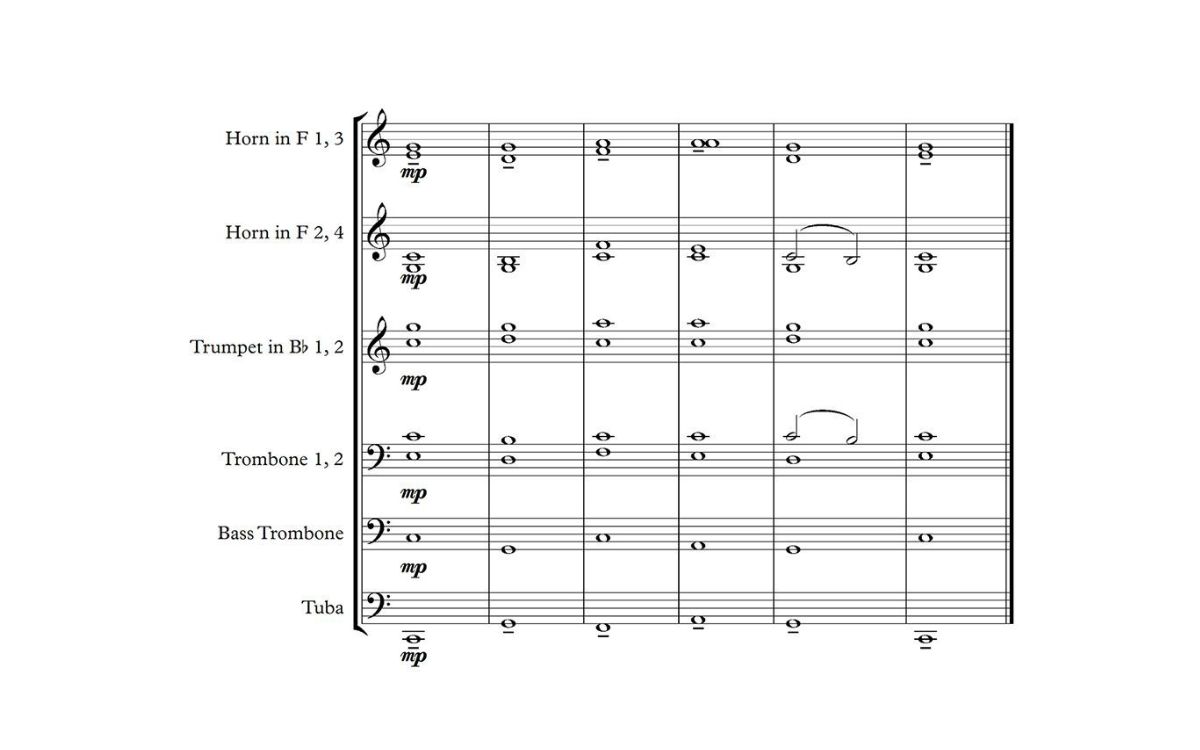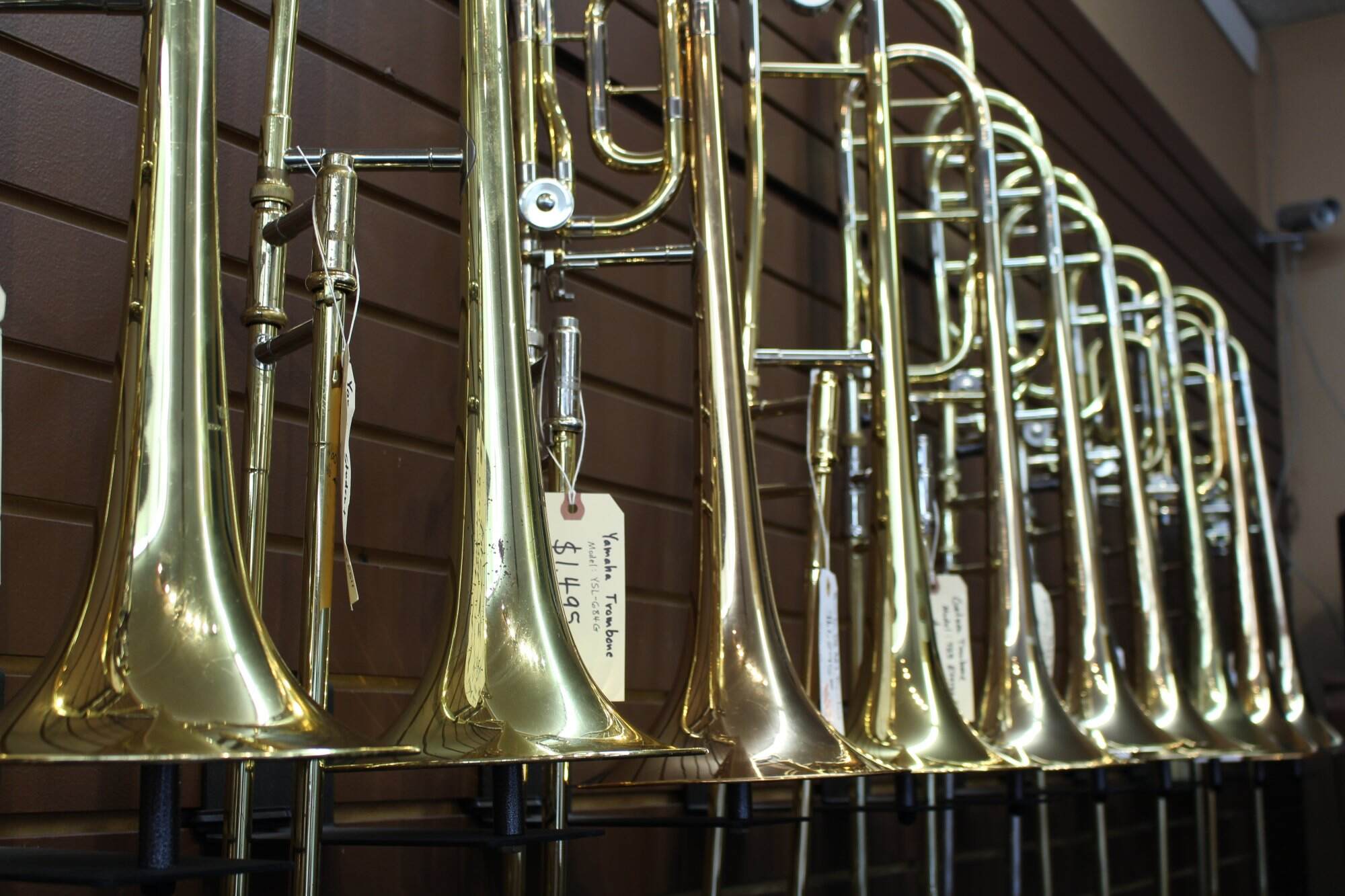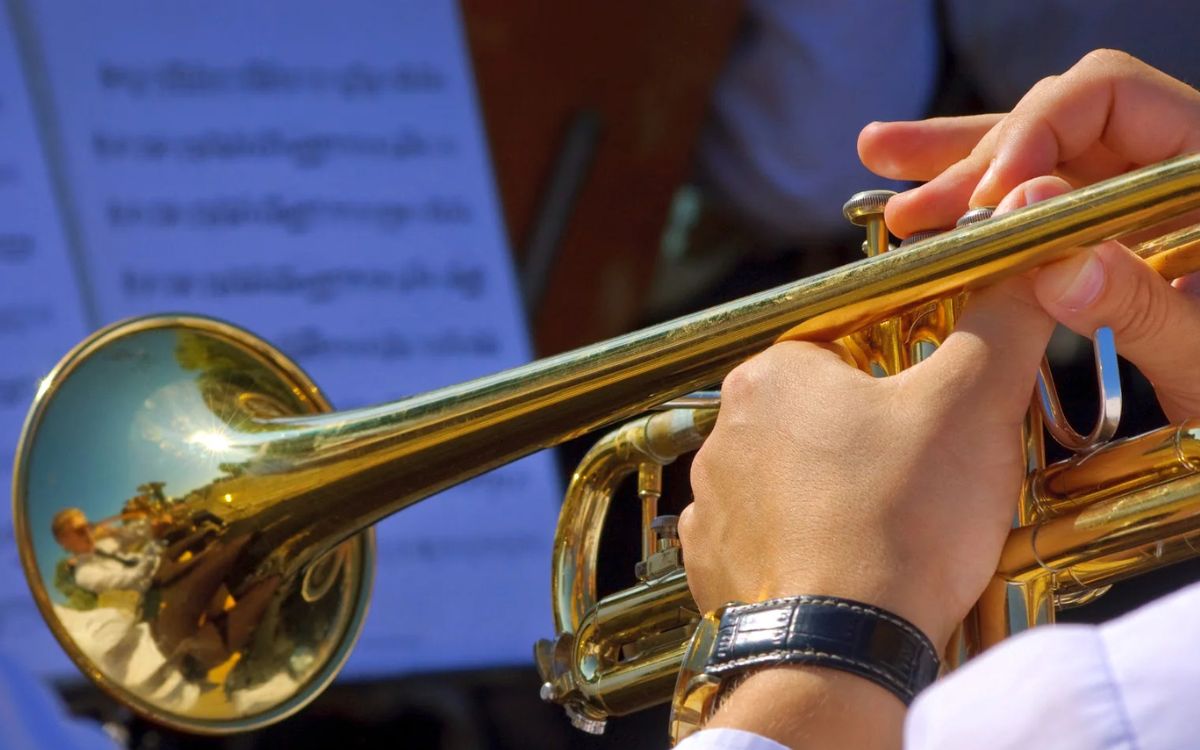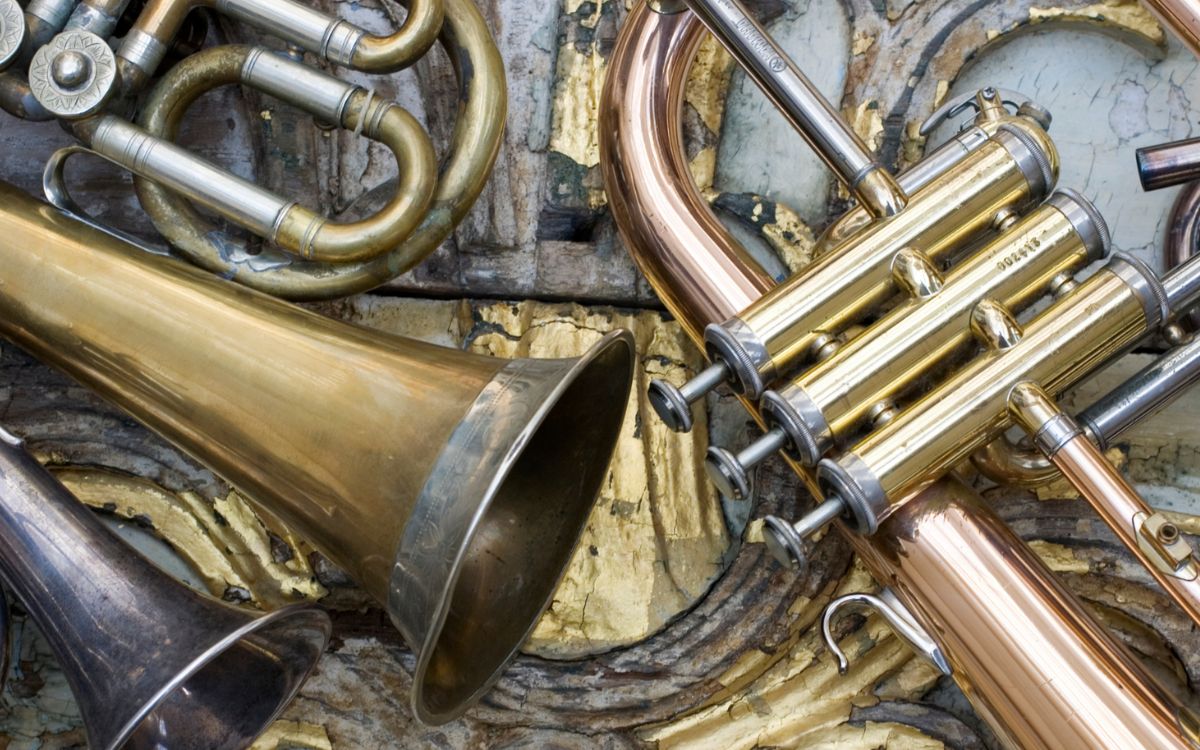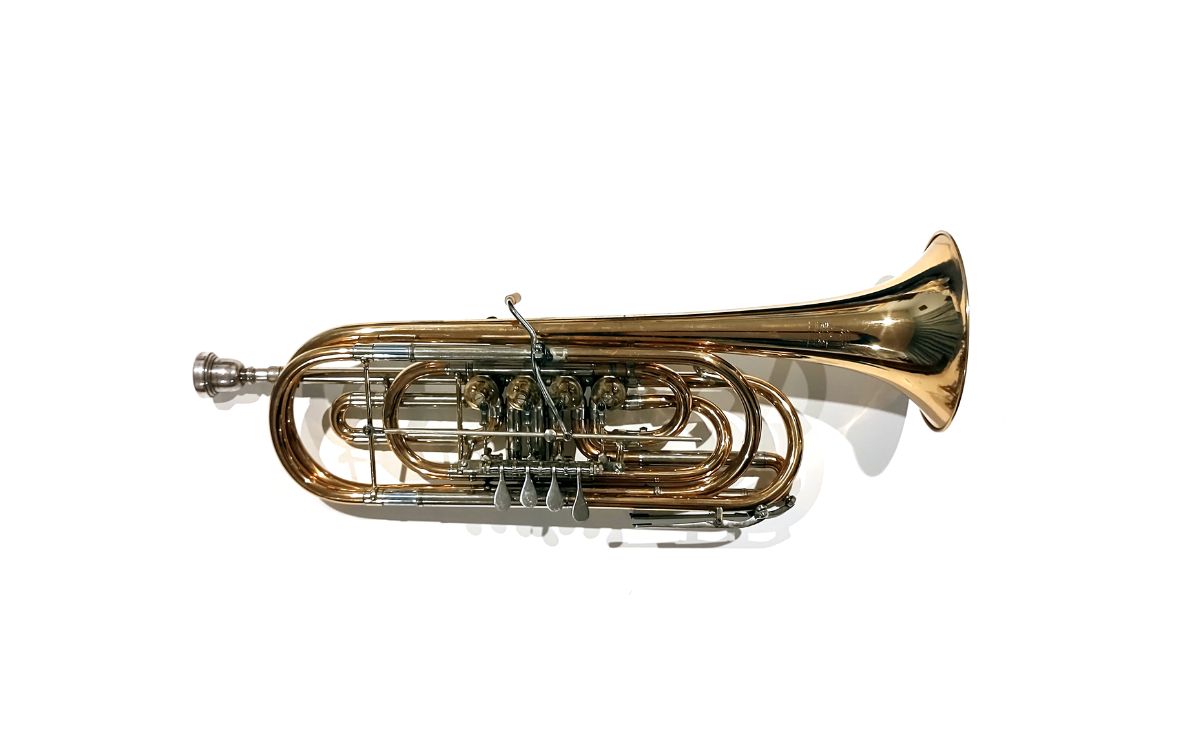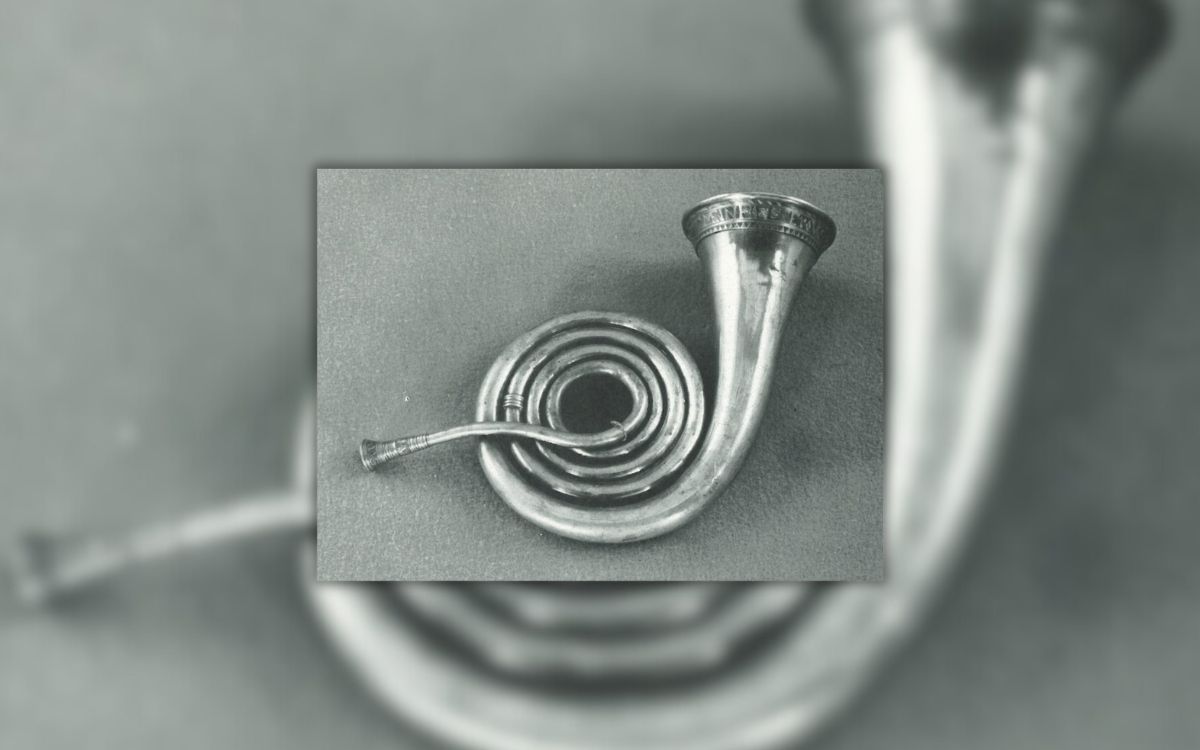Home>Instruments>Brass Instruments>What Frequencies Are Brass Instruments
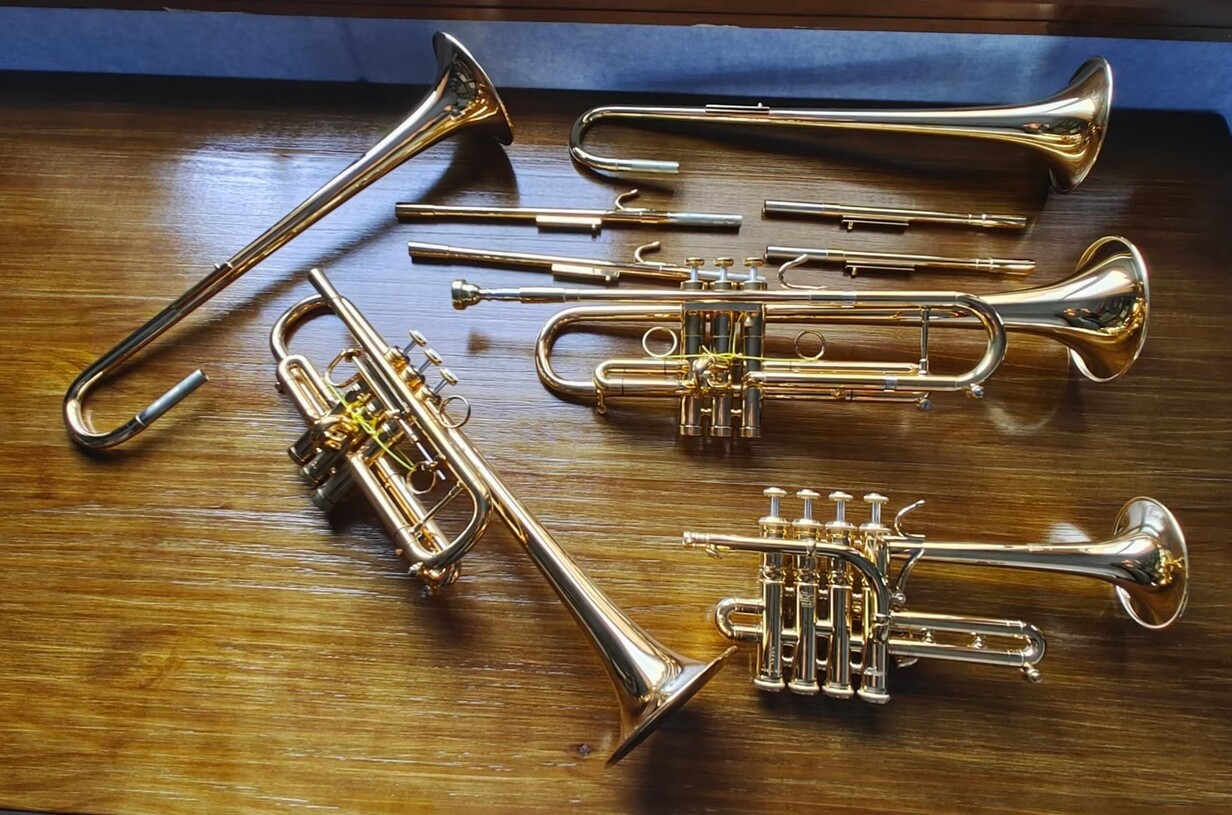

Brass Instruments
What Frequencies Are Brass Instruments
Modified: January 22, 2024
Discover the various frequencies produced by brass instruments and how they contribute to the unique sound of these musical instruments. Learn more about brass instruments and their characteristic frequencies.
(Many of the links in this article redirect to a specific reviewed product. Your purchase of these products through affiliate links helps to generate commission for AudioLover.com, at no extra cost. Learn more)
Table of Contents
Introduction
Brass instruments have long been renowned for their powerful and resonant sound. From the bright and dynamic timbre of the trumpet to the rich and majestic tones of the tuba, these instruments have found their place in various musical genres, including classical, jazz, and even contemporary pop music. But have you ever wondered what frequencies produce those distinctive sounds that make brass instruments so unique?
In this article, we will delve into the world of brass instruments and explore the frequencies that are at the heart of their captivating sound. By understanding these frequencies, you will gain a deeper appreciation for the complexities involved in creating beautiful music with these remarkable instruments.
Before we dive into the specifics, let’s first gain a basic understanding of brass instruments. Unlike other types of instruments, such as woodwinds or strings, which produce sound through vibration, brass instruments produce sound through the buzzing of the performer’s lips into a cup-shaped mouthpiece. This buzzing creates vibrations that travel down the instrument’s tubing, ultimately resulting in the production of sound.
Brass instruments are typically made of brass or other metals, and their unique design, including the length and shape of the tubing, determines the pitch and resonance of the instrument. The player can manipulate the sound further by utilizing valves or slides to change the length of the tubing, thereby altering the pitch of the instrument.
Now that we have a foundation of understanding, let’s explore the frequencies that give brass instruments their distinctive character.
Understanding Brass Instruments
Brass instruments are a diverse family of musical instruments that share a common characteristic: the use of brass as the primary material for their construction. This family includes instruments such as the trumpet, trombone, French horn, and tuba, each with its own unique shape, size, and sound.
The sound production in brass instruments is based on the principle of the vibrating air column inside the instrument. When a musician blows air into the instrument, the vibrations created by the lips on the mouthpiece travel through the tubing, producing sound waves that resonate and amplify within the instrument.
One important feature of brass instruments is the use of valves or slides to change the effective length of the tubing. By manipulating the length, musicians can alter the pitch and produce different notes. The tightness or looseness of the musician’s embouchure, the way they shape their lips and control the airflow, also plays a significant role in determining the sound quality and pitch.
Another unique characteristic of brass instruments is their ability to produce a wide range of dynamics. With proper breath control and embouchure adjustment, musicians can achieve a soft and gentle pianissimo or a powerful and booming fortissimo, capable of filling a concert hall with sound.
Brass instruments are known for their bright and bold sound quality. Their timbre is often described as rich, warm, and intense, which sets them apart from other instruments. This distinctive sound is a result of the harmonics produced by the vibrating air column inside the instrument, along with the unique characteristics of the brass material itself.
Brass instruments are widely used in various musical genres, including classical, jazz, marching bands, and even pop music. They have the versatility to play melodic lines, harmonies, and provide powerful rhythmic support. In orchestras, brass instruments often play a prominent role, adding brilliance, depth, and grandeur to the overall sound.
Now that we have a better understanding of brass instruments, let’s explore the frequencies that are essential to their captivating sound.
Overview of Brass Instrument Frequencies
When it comes to the frequencies produced by brass instruments, it’s important to understand that each instrument has its own unique range and characteristics. However, there are some general trends and principles that can be observed across the brass instrument family.
Brass instruments are renowned for their ability to produce strong fundamental tones along with a series of harmonics or overtones. The fundamental tone is the lowest frequency produced by the instrument, while the harmonics are frequencies that are multiples of the fundamental frequency.
Typically, brass instruments produce frequencies in the lower to mid-range of the musical spectrum. The fundamental pitches of brass instruments can vary depending on factors such as the length and design of the tubing, the size of the mouthpiece, and the technique of the musician.
For instance, the trumpet, one of the most recognizable brass instruments, generally produces fundamental frequencies ranging from around 261.63 Hz (C4) to 523.25 Hz (C5) in concert pitch. However, skilled trumpet players can extend the upper range by producing higher harmonics.
The trombone, with its larger tubing and slide mechanism, produces lower fundamental frequencies compared to the trumpet. The tenor trombone, for example, typically plays in the range of 130.81 Hz (C3) to 261.63 Hz (C4) in concert pitch.
French horns, known for their rich and melodious sound, have a wider range of pitches, from around 146.83 Hz (D3) to 587.33 Hz (D5) in concert pitch. The horn’s characteristic sound is created by its conical shape and the player’s ability to manipulate the hand in the bell for timbre control.
Lastly, the tuba, the lowest-pitched brass instrument, produces fundamental frequencies ranging from around 55 Hz (B1) to 220 Hz (A2) in concert pitch. The tuba’s large size, combined with its deep cup-shaped mouthpiece, contributes to its deep and resonant sound.
It’s important to note that the frequencies mentioned above are approximate and can vary based on the specific instrument, player, and musical context. Additionally, as brass instruments can produce harmonics beyond the fundamental frequency, these instruments offer a wide range of pitch possibilities.
In the next sections, we will explore the specific frequency ranges and characteristics of each brass instrument in more detail.
Trumpet Frequencies
The trumpet is a versatile and powerful brass instrument that is renowned for its bright and piercing sound. It is commonly used in a wide range of musical genres, including classical, jazz, and even pop music. The trumpet has a cylindrical bore and three piston valves, which allow the player to change the pitch by altering the length of the tubing.
The frequencies produced by the trumpet cover a broad spectrum, with the instrument’s range spanning multiple octaves. The fundamental frequencies of the trumpet typically range from around 261.63 Hz (C4) to 523.25 Hz (C5) in concert pitch. However, skilled trumpet players can extend the upper range by producing higher harmonics.
When playing the trumpet, the primary frequency heard is the fundamental tone. However, the instrument also produces a series of harmonics or overtones that contribute to its unique sound. These harmonics are multiples of the fundamental frequency and add depth and complexity to the sound produced by the trumpet.
For example, when playing a note with a fundamental frequency of 261.63 Hz (C4), the trumpet will also produce harmonics at 523.25 Hz (C5), 784.87 Hz (G5), and so on. The presence of these harmonics gives the trumpet its characteristic brightness and projection.
In addition to the range of frequencies, the trumpet is also capable of producing different dynamic levels, from soft and subtle pianissimos to soaring fortissimos. The player’s embouchure, breath control, and valve technique all contribute to the ability to manipulate dynamics while playing the trumpet.
Furthermore, the timbre or tone quality of the trumpet is influenced by the player’s technique and the choice of mouthpiece. Different mouthpieces can alter the resonant frequencies and characteristics of the instrument, allowing for greater versatility and tonal possibilities.
In summary, the trumpet produces frequencies in the mid to high range, with the fundamental frequency typically ranging from 261.63 Hz (C4) to 523.25 Hz (C5) in concert pitch. The instrument’s ability to produce high harmonics, along with its dynamic range and tonal flexibility, contributes to its iconic and vibrant sound.
Trombone Frequencies
The trombone is a brass instrument characterized by its telescoping slide mechanism, which allows players to change the pitch by extending or contracting the length of the tubing. With its unique design, the trombone produces a distinct sound that is often described as rich, warm, and smooth.
When it comes to frequencies, the trombone generally plays in the lower range compared to other brass instruments. The fundamental frequencies of the tenor trombone, for example, typically range from around 130.81 Hz (C3) to 261.63 Hz (C4) in concert pitch.
Similar to other brass instruments, the trombone generates harmonics or overtones above the fundamental frequency. These harmonics create a series of pitches that give the trombone its characteristic sound.
For instance, when playing a note with a fundamental frequency of 130.81 Hz (C3), the trombone will also produce harmonics at 261.63 Hz (C4), 392 Hz (G4), and so on. These harmonics add depth and complexity to the trombone’s timbre, allowing for expressive and versatile musical performances.
The trombone is capable of producing a wide range of dynamics, from gentle and delicate pianissimos to powerful and resonant fortissimos. By controlling breath support, embouchure, and slide technique, trombone players can manipulate the volume and intensity of the sound.
Furthermore, the trombone’s unique slide mechanism allows for smooth glissandos and precise pitch control. Players can seamlessly transition between notes and create expressive sliding effects, expanding the range of musical possibilities.
Overall, the trombone produces frequencies in the lower to mid-range, with fundamental frequencies typically ranging from 130.81 Hz (C3) to 261.63 Hz (C4) in concert pitch. Its harmonics, dynamic range, and slide capabilities contribute to the trombone’s distinct and captivating sound.
French Horn Frequencies
The French horn is a brass instrument known for its rich and melodious sound. It features a coiled tubing and a large bell, which contribute to its characteristic timbre and tonal qualities. The French horn is renowned for its versatility, capable of producing lyrical melodies, powerful fanfares, and everything in between.
When it comes to frequencies, the French horn has a wide range of pitches. The fundamental frequencies typically range from around 146.83 Hz (D3) to 587.33 Hz (D5) in concert pitch. This range allows the French horn to cover a broad spectrum of musical notes, from low and mellow tones to higher, more piercing sounds.
Similar to other brass instruments, the French horn produces harmonics or overtones above the fundamental frequencies. These harmonics contribute to the instrument’s unique resonance and complexity. When playing a note, the French horn will produce a series of overtones that blend together to create its characteristic sound.
The French horn’s timbre can be further shaped and influenced by the player’s hand position inside the bell. By partially covering the bell with the hand, players can adjust the tone color and create subtle changes in the instrument’s harmonic structure.
In addition to its wide range of frequencies, the French horn is capable of producing a dynamic and expressive sound. Skilled horn players can navigate through a range of dynamics, from soft and delicate pianissimos to bold and powerful fortissimos. This dynamic control allows for nuanced and emotionally compelling performances.
The French horn is also known for its ability to blend with other instruments in ensemble settings. Its warm and resonant sound is often featured in orchestras, contributing to the grandeur and richness of the overall sound. It is also a staple instrument in brass quintets and chamber ensembles.
In summary, the French horn produces frequencies across a wide range, typically ranging from 146.83 Hz (D3) to 587.33 Hz (D5) in concert pitch. Its harmonics, dynamic capabilities, and unique hand shaping contribute to the instrument’s expressive and captivating sound.
Tuba Frequencies
The tuba is the largest and deepest-sounding brass instrument in the orchestra. With its imposing size and booming sound, the tuba provides a solid foundation and adds depth to the low end of the musical spectrum. It is often considered the backbone of the brass section.
When it comes to frequencies, the tuba produces fundamental tones in the lowest range among brass instruments. The fundamental frequencies typically range from around 55 Hz (B1) to 220 Hz (A2) in concert pitch. These low frequencies create a rich and powerful sound that resonates with a profound presence.
Similar to other brass instruments, the tuba also generates a series of harmonics or overtones above the fundamental frequencies. These harmonics contribute to the complexity and richness of the tuba’s sound, adding depth and character to its overall timbre.
Due to its large size and deep cup-shaped mouthpiece, the tuba is capable of producing a warm and resonant sound. It possesses a remarkable range of dynamics, allowing players to create both gentle, sustained notes and forceful, commanding blasts. The tuba’s dynamic versatility adds to its ability to convey a wide range of emotions in musical performances.
The tuba is commonly used in orchestras and concert bands, providing a solid bass foundation and lending weight and gravitas to the ensemble. It is also a staple in brass bands and marching bands, where its powerful sound can cut through the outdoor environment and carry across long distances.
While the tuba is primarily known for its deep, low frequencies, it is also capable of playing higher notes, particularly in the hands of skilled players. By utilizing different combinations of valve and slide positions, tuba players can access a broader range of pitches and create melodic phrases within the instrument’s capabilities.
In summary, the tuba produces frequencies in the lowest range among brass instruments, typically ranging from 55 Hz (B1) to 220 Hz (A2) in concert pitch. Its deep and resonant sound, coupled with its large size and dynamic capabilities, make the tuba an essential instrument for providing the foundation and richness in a wide variety of musical contexts.
Conclusion
Brass instruments are truly remarkable musical instruments that captivate audiences with their unique sound and versatility. From the bright and piercing tones of the trumpet to the deep and resonant notes of the tuba, each member of the brass family contributes its own distinctive frequencies and characteristics.
Understanding the frequencies produced by brass instruments allows us to appreciate the complexities involved in creating their captivating sound. The fundamental frequencies, along with the harmonics or overtones, contribute to the rich timbre and expressive range of these instruments.
From the trumpet’s mid to high range frequencies, capable of powerful projection and melodic agility, to the trombone’s lower range, which adds richness and depth, each instrument has its own distinct sonic palette. The French horn’s wide range of frequencies and its ability to blend with other instruments, and the tuba’s deep and resonant frequencies that provide a solid foundation, enhance the overall sound and texture of any musical performance.
Additionally, all brass instruments possess a wide dynamic range, allowing musicians to communicate a wide range of emotions and musical expressions. The control of breath, embouchure, technique, and equipment contribute to the dynamic and tonal versatility of brass instruments.
Whether it’s the brilliant fanfares of a brass ensemble, the majestic sound of a symphony orchestra, or the energetic rhythms of a marching band, brass instruments play a vital role in shaping the musical landscape. Their frequencies, along with skilled musicianship, create a powerful and emotive experience for both performers and listeners.
So, next time you listen to a brass ensemble or attend a concert featuring brass instruments, pay close attention to the frequencies produced by these remarkable instruments. Let their unique sound envelop you and transport you into a world of musical wonder.


